Flooring Options: Natural vs. Man-Made for Your Home
In the quest for a more sustainable future, every choice we make counts, and that includes our flooring options.
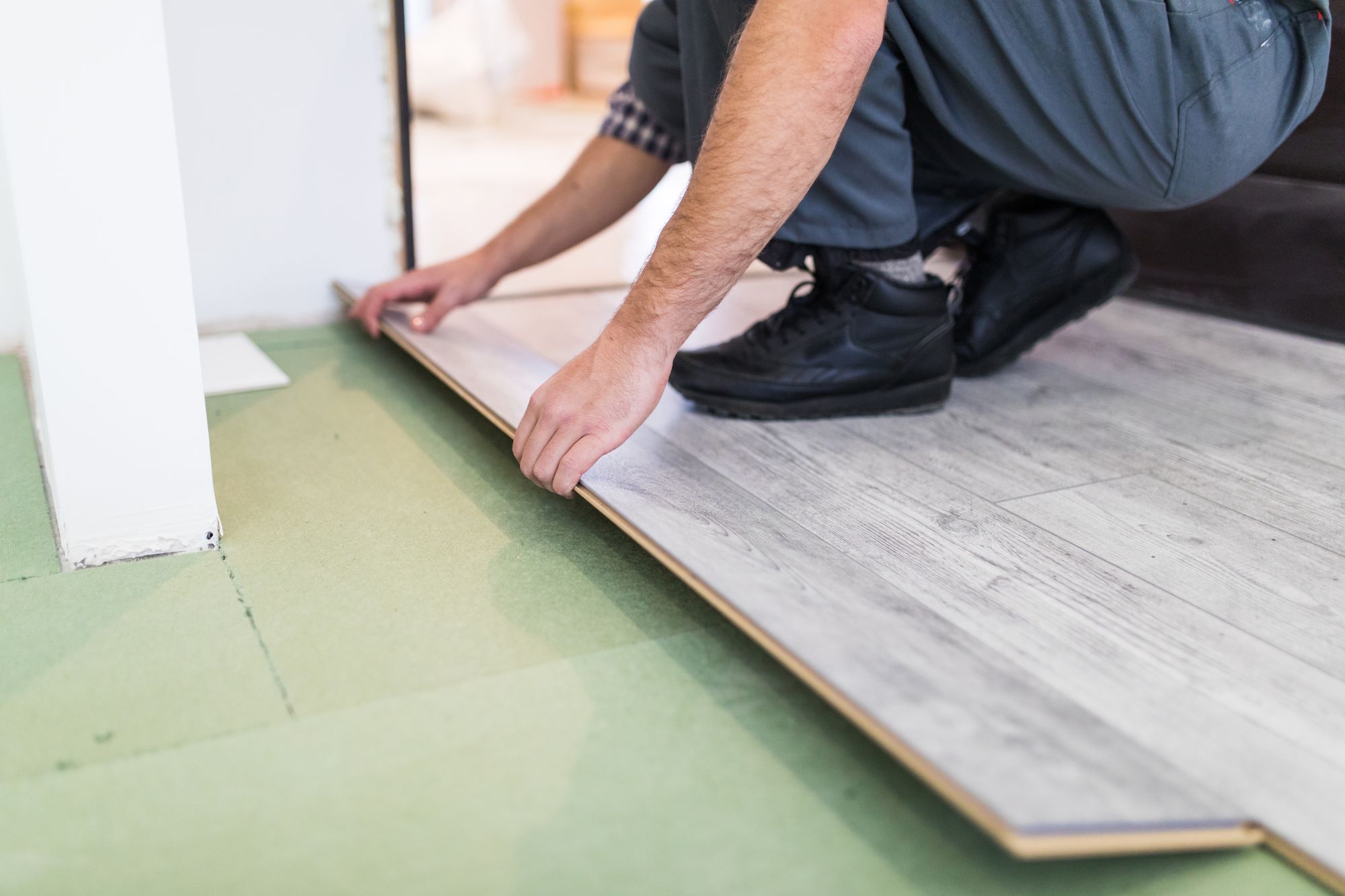
Table of Contents
- Introduction: Understanding the Importance of Flooring Choices
- Key Takeaways: Quick Summary of the Blog
- Man-Made Materials: Exploring the World of Synthetic Flooring
- Flooring Materials & Grades: A Comprehensive Guide
- How to Choose the Right Tile: Factors to Consider
- Going Green: Discover Eco-Friendly and Sustainable Flooring Choices
- Conclusion: Wrapping Up Your Flooring Journey
Key Takeaways
- The right flooring choice significantly impacts your home's aesthetic appeal, functionality, comfort, and value.
- Due to advances in technology, flooring options now extend beyond traditional materials to include man-made types that mimic the look and feel of natural ones.
- When selecting flooring, consider factors such as durability, maintenance, cost, and lifestyle needs. For instance, high-traffic areas require resilient flooring, while comfort might be a priority in bedrooms or living rooms.
- Flooring materials come in different grades, each offering varied levels of quality, durability, and price points.
- Eco-friendly and sustainable flooring options are gaining popularity, offering homeowners a chance to contribute positively to the environment while enjoying unique and stylish floors.
- Making an informed flooring choice involves understanding the pros and cons of each material and aligning them with your specific needs and preferences.
Introduction
The flooring in your home plays a pivotal role in not only defining the aesthetic appeal but also impacts functionality and comfort. As the foundation of your decor, the right flooring sets the mood, influences the visual perception of space, and significantly contributes to your home's value.
Choosing the right flooring, therefore, is not a decision to be taken lightly. It’s an investment that demands careful consideration of various factors such as durability, maintenance, cost, and the lifestyle of the inhabitants. High-traffic areas like kitchens or hallways require durable flooring that can withstand wear and tear, while bedrooms or living rooms might call for a touch of luxury and comfort.
Furthermore, with the advent of technology, flooring options have exponentially expanded beyond traditional hardwood or stone to include synthetic materials that mimic natural ones. And as sustainability becomes a priority for more homeowners, eco-friendly options are gaining momentum in the market.
This blog aims to unravel the mystery of flooring options, comparing natural versus man-made materials, and guide you in making the best choice for your home. So, whether you're renovating, building a new home, or simply curious about flooring materials, buckle up and join us on this informative journey.
Introduction to Man-Made Materials
In the realm of interior design, man-made materials have revolutionized the flooring industry. These synthetic products, designed to mimic the appearance and texture of natural materials, offer homeowners a chance to attain the desired look without compromising on durability or maintenance. From ceramic tiles that resemble natural stone to vinyl flooring that imitates hardwood, the options are vast and versatile.
Whether trying to achieve a rustic charm with faux wood or opting for the elegance of faux marble, these man-made materials provide a practical and cost-effective alternative to their natural counterparts. Now, let's delve into the advantages and disadvantages these materials bring to your home.
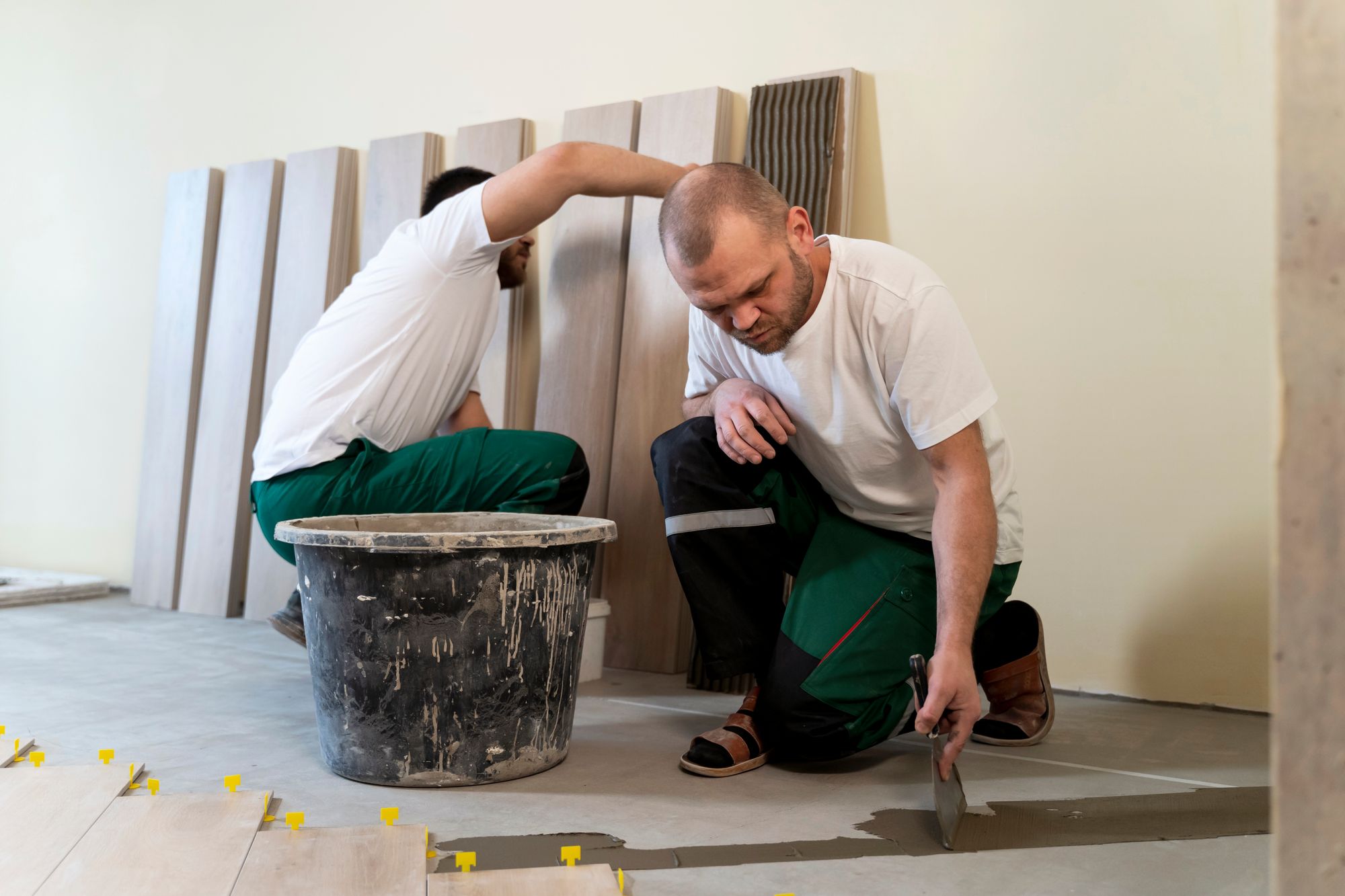
Benefits and Drawbacks of Man-Made Materials
Man-made materials have their unique set of advantages and disadvantages that make them suitable for different uses and environments. Whether you are renovating your home or building a new one, understanding these pros and cons is crucial in making an informed decision.
Benefits:
- Durability: Many synthetic materials are designed to withstand heavy foot traffic, making them ideal for high-traffic areas in homes and commercial spaces.
- Variety: Man-made materials come in a wide array of colors, patterns, and styles, allowing for greater customization to suit individual preferences.
- Maintenance: Compared to natural materials, many synthetic options are easier to clean and maintain, which can save time and effort in the long run.
- Cost-Effective: Generally, man-made materials are less expensive than their natural counterparts, offering a cost-effective solution for those on a budget.
Drawbacks:
- Environmental Impact: The production of some synthetic materials can have a negative impact on the environment, contributing to pollution and waste.
- Lack of Authenticity: Despite their ability to mimic natural materials, synthetic options may lack the unique characteristics and warmth that come with natural materials.
- Potential Health Risks: Some synthetic materials may release volatile organic compounds (VOCs) into the air, which can cause health issues over time.
Popular Man-Made Flooring Options
Man-made flooring options have gained popularity due to their versatility, durability, and affordability. Each type of flooring has its unique characteristics, making it suitable for different spaces and uses. Here, we'll explore some of the most popular synthetic flooring options, their cost considerations, and the essential steps to keep in mind when choosing each of them.
When it comes to synthetic flooring, the advancements in technology have given homeowners a plethora of options that not only mimic the appearance of natural materials but also offer unique benefits. However, each type comes with its own set of advantages and disadvantages. Below, we delve into the most popular man-made flooring materials, offering a balanced view through detailed pros and cons lists. Furthermore, we include reviews of specific brands or products within each material category to guide you towards making an informed choice.
1. Laminate Flooring
Pros:
· Durability: Laminate is known for its resistance to scratches, dents, and stains, making it ideal for high-traffic areas.
· Ease of Installation: Most laminate flooring options come with a click-together design that allows for DIY installation.
· Cost-Effective: Generally cheaper than hardwood, offering a budget-friendly option that mimics the look of more expensive materials.
Cons:
· Moisture Sensitivity: Laminate can warp when exposed to moisture, making it unsuitable for bathrooms or basements without proper precautions.
· Difficult to Repair: Once damaged, laminate boards may need to be completely replaced, as they cannot be sanded down or refinished.
Product Review:
· QuickStep Impressive Ultra: This laminate flooring line stands out for its realistic wood textures and water-repellent surface technology, making it more resistant to moisture than many competitors. Customers rave about its ease of installation and the depth of its realistic wood imitations. However, some note the higher price point as a downside.
2. Vinyl Flooring
Pros:
· Water Resistance: Vinyl offers excellent protection against moisture, making it suitable for kitchens, bathrooms, and laundry rooms.
· Comfort: Softer underfoot than tile or wood, providing a more comfortable standing surface.
· Variety of Designs: Available in a wide range of colors, patterns, and styles, including options that closely mimic wood, stone, and tile.
Cons:
· VOC Emissions: Some vinyl flooring can emit volatile organic compounds (VOCs) over time, impacting indoor air quality.
· Not Biodegradable: Vinyl is not eco-friendly, as it's made from petroleum products and can be difficult to recycle.
Product Review:
· Armstrong Luxe Plank with Rigid Core: Armstrong's Luxe Plank line is praised for its realistic visuals and durable construction. The Rigid Core technology offers added resistance to dents and stability over uneven floors. Reviewers highlight the ease of installation and the product's resilience in high-moisture areas. Critics often mention environmental concerns associated with vinyl products.
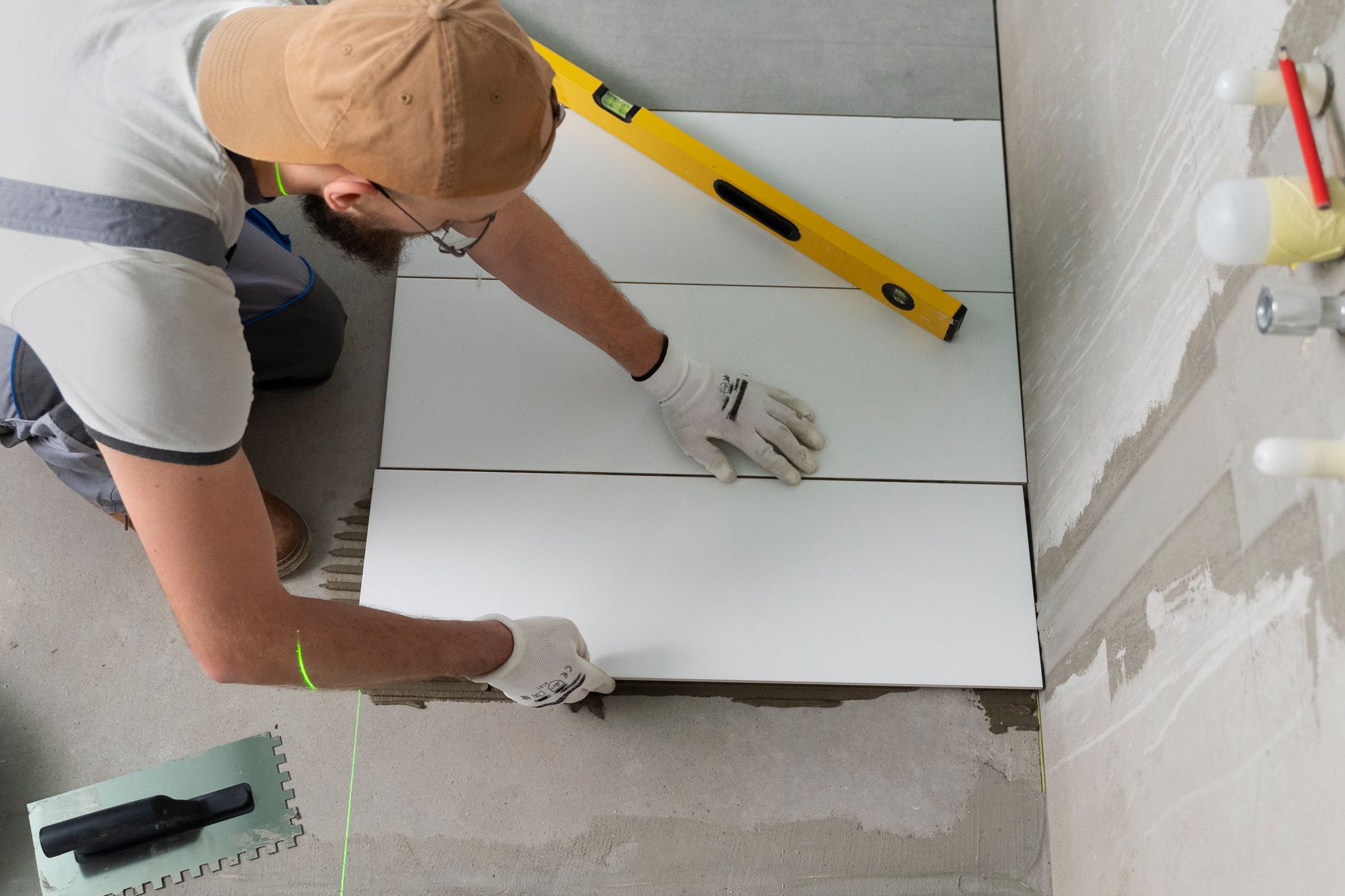
3. Ceramic Tile
Pros:
· Low Maintenance: Ceramic tiles are easy to clean and resist stains, odors, and dirt.
· **Health: **Tiles do not harbor allergens, making them an excellent choice for allergy sufferers.
· Fire and Water Resistance: Offers superior resistance to fire and water damage.
Cons:
· Cold and Hard Surface: Can be uncomfortable to stand on for long periods and cold underfoot in cooler climates.
· Grout Maintenance: While tiles are low maintenance, the grout between them can require regular cleaning and sealing to prevent stains and mold growth.
Product Review:
· Daltile Porcelain Tile: Daltile's Porcelain Tile collection is widely celebrated for its durability and extensive range of style options. The product receives high marks for its ability to withstand heavy foot traffic and ease of maintenance. Some users point out the challenge of cutting porcelain tile for DIY projects but overall recommend the product for both residential and commercial applications.
Choosing the right man-made flooring option involves considering the room's use, your budget, and the look you want to achieve. Always compare different materials, brands, and prices, and consider hiring a professional for the installation to ensure a high-quality finish.
Types of Flooring Materials and Their Certified Grades
Flooring plays a pivotal role in determining the ambiance, comfort, and functionality of your living space. The multitude of flooring materials available today cater to various needs, ranging from durability and cost to aesthetics and sustainability. It's crucial to understand the different types of flooring materials and their certified grades, which indicate the quality and performance of these materials.
1. Hardwood Flooring
Hardwood flooring is a favorite for its natural beauty and durability. It's available in a variety of species like oak, maple, and walnut. The National Wood Flooring Association (NWFA) provides grading for hardwood flooring based on the number and size of knots, color consistency, and other natural characteristics.
2. Laminate Flooring
Laminate flooring replicates the look of hardwood but at a fraction of the cost. It's durable and easy to install. Laminate flooring is graded by the European Producers of Laminate Flooring (EPLF) based on factors like resistance to abrasion, impact, stains, and burning.
3. Vinyl Flooring
Vinyl flooring is water-resistant and durable, making it perfect for kitchens and bathrooms. Vinyl flooring comes in various styles mimicking wood, stone, or tile. ASTM International sets the standards for vinyl flooring performance.
4. Tile Flooring
Tile flooring, often made from ceramic or porcelain, is highly durable and water-resistant. The Porcelain Enamel Institute (PEI) rates tiles based on their suitability for different usage levels, from light to heavy traffic.
5. Carpet Flooring
Carpets provide warmth and sound insulation. They come in a variety of colors, textures, and patterns. The Carpet and Rug Institute (CRI) provides a grading system that includes performance ratings and indoor air quality testing.
6. Bamboo Flooring
Bamboo is an eco-friendly flooring option, known for its durability and unique aesthetics. The hardness and quality of bamboo flooring can differ based on the manufacturing process. There's no universal grading system, but generally, the longer the bamboo matures before harvesting, the harder and more durable the flooring.
7. Cork Flooring
Cork is a sustainable, comfortable, and insulating flooring material. The quality of cork flooring is often determined by its density and thickness, but there isn't a universal grading system.
8. Stone Flooring
Stone flooring, including granite, marble, and slate, is natural, durable, and unique. The Marble Institute of America (MIA) provides a grading system for natural stone, which includes factors like absorption rate, density, and flexural strength.
Understanding the types of flooring materials and their certified grades is crucial in making an informed decision about the right flooring for your needs. Whether you prioritize durability, cost, aesthetics, or sustainability, there is a flooring material to suit your needs, ensuring the longevity and comfort of your living space.
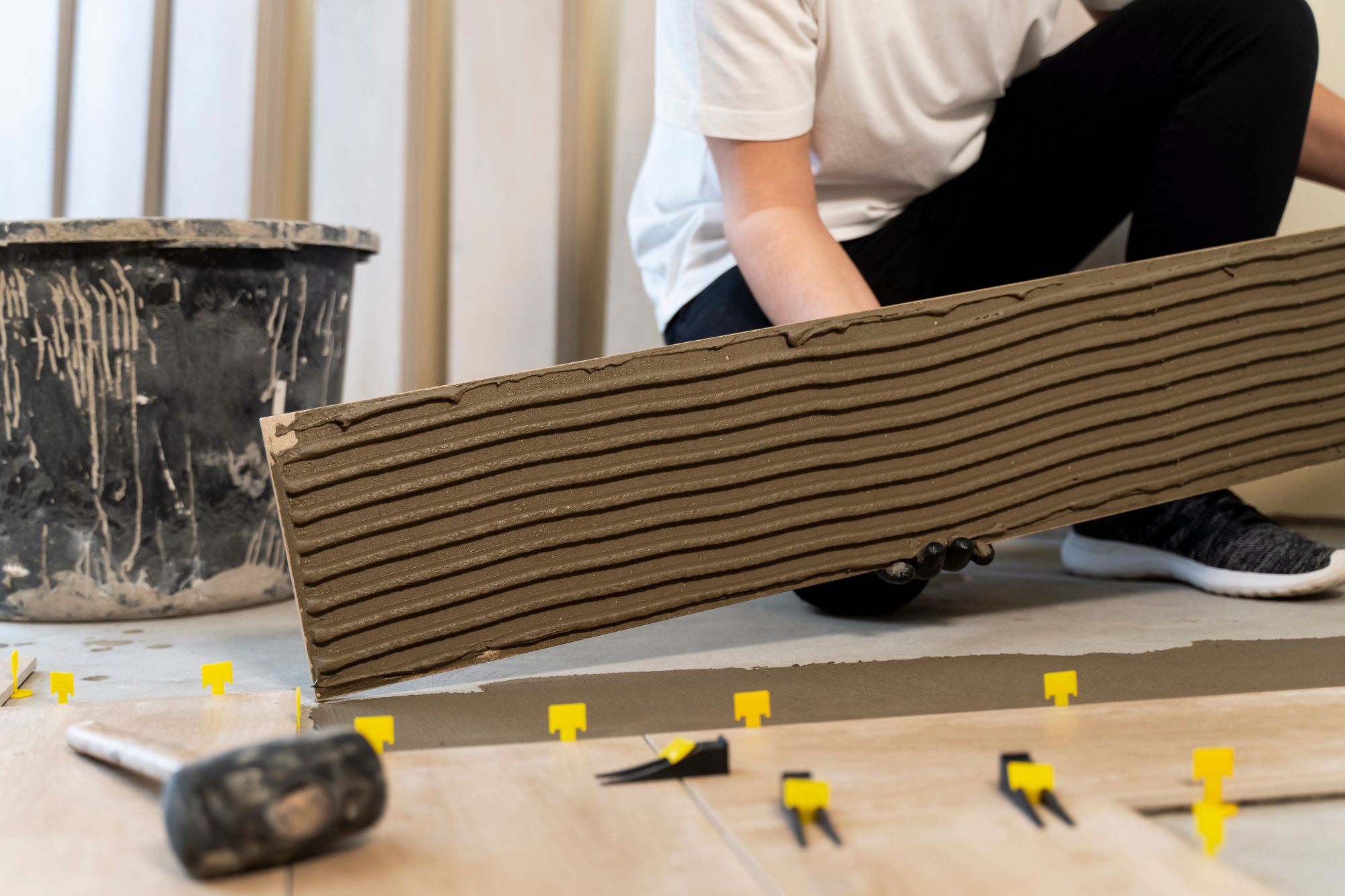
Detailed Comparison of Different Flooring Materials:
When choosing flooring for your home or office, it's important to understand the strengths and weaknesses of each material. Here is a detailed comparison of different flooring materials to help you make the best decision for your space.
| Flooring Material | Pros | Cons | Cost |
|---|---|---|---|
| Hardwood | Adds a warm, classic look to your space. Can be refinished multiple times. | Can scratch easily. Not ideal for areas with high moisture. | $3-$5 per square foot for softwoods. $5-$10 for hardwoods. |
| Engineered Wood | More stable than solid hardwood. Can handle moisture better. | Can only be refinished once or twice. | $4-$10 per square foot. |
| Laminate | Resistant to scratches and stains. Wide variety of designs. | Can't be refinished. Can look synthetic. | $1-$5 per square foot. |
| Vinyl | Water and stain-resistant. Comfortable underfoot. | Can tear and dent over time. Difficult to repair. | $2-$8 per square foot. |
| Ceramic Tile | Very durable. Available in many styles. | Can be cold and hard underfoot. Grout can stain. | $1-$20 per square foot. |
| Porcelain Tile | More durable than ceramic. Can be used indoors and outdoors. | Installation can be challenging. Can be expensive. | $3-$10 per square foot. |
| Linoleum | Eco-friendly. Durable and easy to clean. | Can dent easily. Color may fade with sunlight. | $2-$5 per square foot. |
| Bamboo | Eco-friendly. Similar look to hardwood. | Can scratch and dent over time. | $5-$7 per square foot. |
| Cork | Comfortable underfoot. Good insulator. | Can fade and discolor. Requires regular sealing. | $3-$8 per square foot. |
| Carpet | Warm and soft underfoot. Excellent sound absorption. | Can trap dirt and allergens. Not suitable for wet areas. | $2-$7 per square foot. |
Each flooring material comes with its unique set of benefits and drawbacks, and the best choice will depend on your specific needs, lifestyle, and budget. Consider factors like durability, maintenance, cost, and appearance, and don't hesitate to consult with a flooring professional to make the most informed decision.
How to Choose the Right Tile for Your Home
Choosing the right tile for your home is more than just finding a style you like; it involves considering a variety of factors to ensure the tile not only looks good but also serves its purpose effectively. Here's a detailed guide to help you navigate the process, along with a FAQ section to address common concerns.
Step-by-Step Selection Guide
1. Assess the Area of Installation: Determine where the tile will be installed (bathroom, kitchen, living area) to understand the requirements related to moisture resistance, foot traffic, and slip resistance.
2. Choose the Right Material: Options include ceramic, porcelain, glass, and natural stone. Porcelain is known for its durability and moisture resistance, making it suitable for bathrooms, while glass tiles are ideal for backsplashes due to their aesthetic appeal.
3. Consider Tile Size and Shape: Larger tiles can make a small room appear bigger, and unconventional shapes (hexagons, chevrons) can add a unique touch to your space.
4. Color Coordination: Consider the color scheme of the room. Neutral colors offer flexibility, while bold colors can make a statement. Light colors can make a room feel more spacious, and dark colors add warmth and hide dirt.
5. Pattern Matching: Decide if you want a uniform look or a patterned design. For patterns, ensure that the tiles can be laid out correctly and that you have extra tiles for cutting and fitting.
6. Think About Finish: Glossy tiles are easy to clean but can be slippery when wet, making them less ideal for bathrooms. Matte finishes are better for floors in high-moisture areas.
7. Durability Needs: Consider the PEI rating for ceramic and porcelain tiles to assess their ability to withstand wear. Higher PEI ratings are better for high-traffic areas.
8. Maintenance Requirements: Some materials require more upkeep than others. Porcelain and ceramic are low maintenance, while natural stone may require sealing to prevent stains.
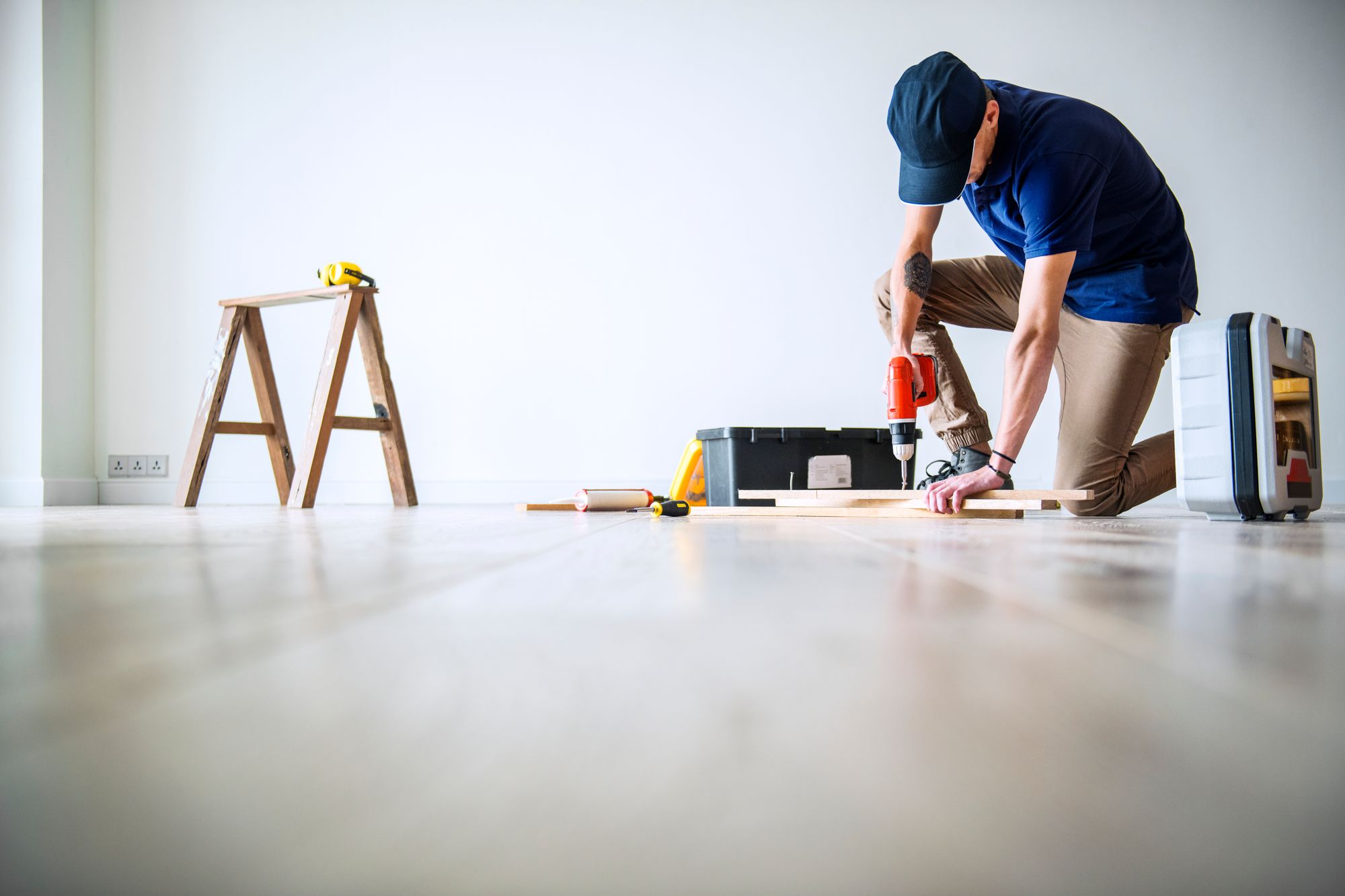
FAQ Section
· Q: How do I know if a tile is suitable for floor or wall installation? A: Check the tile's specifications. Floor tiles are thicker and more durable, while wall tiles are lighter and may not withstand foot traffic.
· Q: Can I use the same tile for floors and walls? A: Yes, but ensure the tile is rated for floor use to handle the wear and tear.
· Q: How many extra tiles should I purchase? A: It's recommended to buy 10-15% more tiles than you need to account for cuts, breakage, and future repairs.
Eco-Friendly and Sustainable Flooring Choices
With an increasing focus on environmental sustainability, many homeowners are seeking eco-friendly flooring options. Here's how to identify sustainable choices and tips for their installation and maintenance.
Eco-friendly floors are made from renewable, natural materials or recycled content, have lower toxicity levels, and require less energy for production. Examples include cork, bamboo, reclaimed wood, linoleum, and certain types of carpeting. These materials not only provide the same durability, comfort, and aesthetic appeal as conventional flooring options, but they also offer the added benefit of being better for our planet.
As we continue to strive for a greener and more sustainable future, considering eco-friendly flooring choices is an excellent way to contribute to this cause and transform our living spaces into healthier, more environmentally-friendly places.
Installation Tips
1. Use Non-Toxic Adhesives: Look for low-VOC (volatile organic compounds) adhesives to minimize environmental impact and indoor air pollution.
2. Proper Subfloor Preparation: Ensure the subfloor is clean, level, and dry to prevent mold growth beneath eco-friendly materials like cork or bamboo.
3. Follow Manufacturer's Instructions: Eco-friendly materials may have specific installation requirements to ensure their longevity and performance.
4. Maintenance: Use natural cleaning products to maintain the beauty and durability of your eco-friendly flooring. Avoid harsh chemicals that can damage the flooring and the environment.
Choosing eco-friendly and sustainable flooring not only contributes to a healthier planet but also adds natural beauty and warmth to your home. By considering the sustainability index and following eco-conscious installation and maintenance tips, you can enjoy a green flooring solution that aligns with your environmental values and design aesthetics.
Benefits of Choosing Eco-Friendly and Sustainable Flooring
Opting for eco-friendly and sustainable flooring offers several benefits. Firstly, it helps lessen the environmental impact by using materials that are renewable, recycled, or have low energy consumption during production.
Secondly, such flooring options often have lower levels of harmful chemicals, improving indoor air quality.
Thirdly, they are often more durable and longer-lasting, reducing replacement frequency and waste.
Lastly, eco-friendly flooring contributes to the overall aesthetic appeal of your home, with natural and unique patterns and textures.
Therefore, sustainable flooring is a smart choice for the environment, your health, and your home's aesthetic.
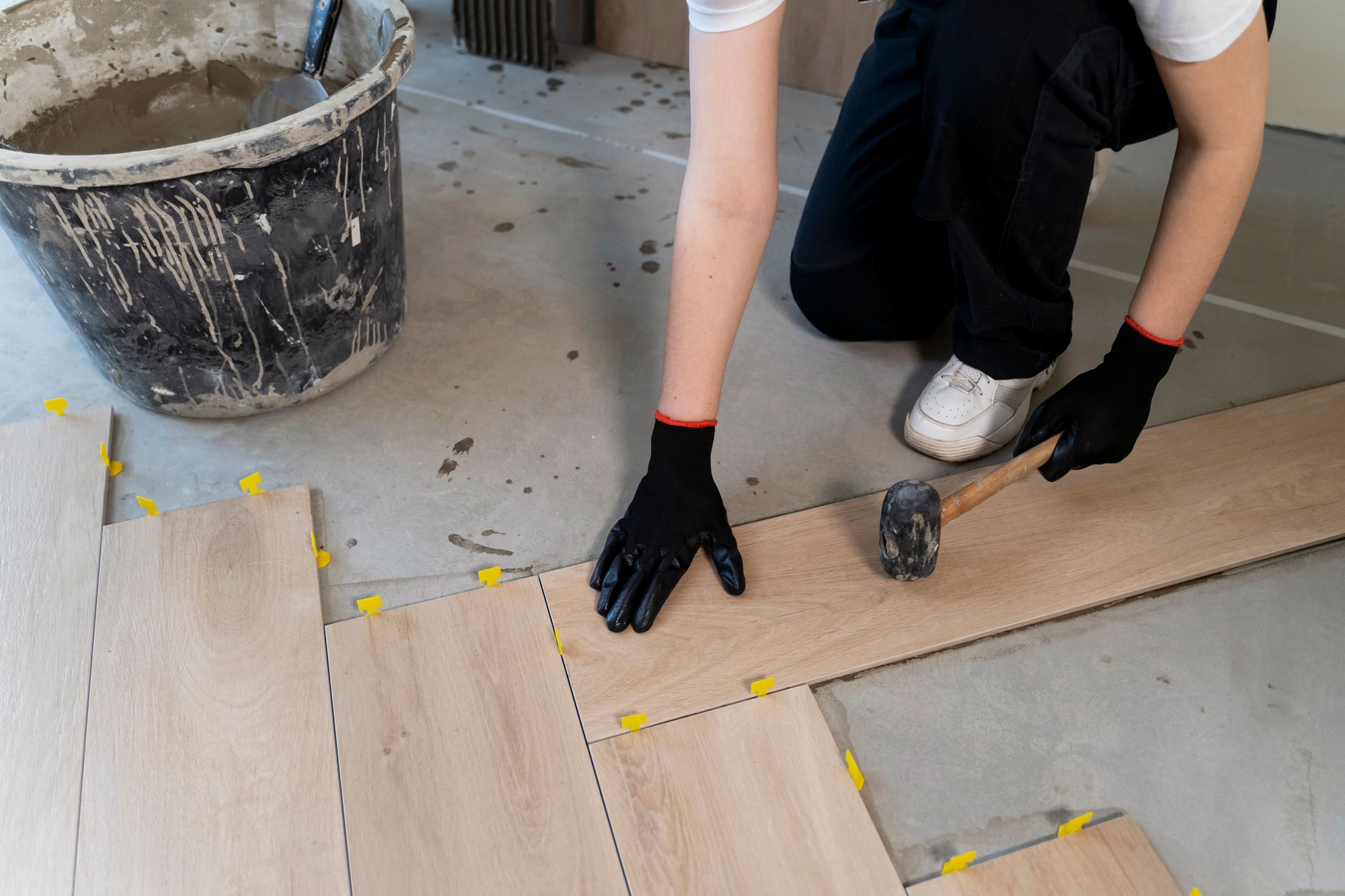
Popular Eco-Friendly and Sustainable Flooring Options, Price Estimates, and Potential Savings
1. Cork Flooring
Cork is a highly sustainable material since it's harvested from the bark of the cork oak tree without cutting down the tree. It has excellent insulation properties, reducing energy costs, and also provides a cushioned surface, making it comfortable for walking.
Price Estimate: $2-$6 per square foot (uninstalled)
Potential Savings: Lower energy bills due to its thermal insulation properties.
2. Bamboo Flooring
Bamboo is a fast-growing plant, making it a renewable resource. It's as durable as hardwood and comes in a variety of colors and grains.
Price Estimate: $2-$5 per square foot (uninstalled)
Potential Savings: Bamboo's durability means less frequent replacement, leading to long-term savings.
3. Reclaimed Wood Flooring
Reclaimed wood is salvaged from old buildings, barns, or river bottoms. It provides rustic charm and uniqueness to your home while reducing the demand for new lumber.
Price Estimate: $8-$15 per square foot (uninstalled)
Potential Savings: Although reclaimed wood is more expensive upfront, it can add significant resale value to your home.
4. Linoleum Flooring
Linoleum is made from linseed oil, cork dust, wood flour, tree resins, and ground limestone. It's durable, biodegradable, and easy to maintain.
Price Estimate: $2-$5 per square foot (uninstalled)
Potential Savings: Linoleum's longevity and low maintenance needs can lead to cost savings over time.
5. Recycled Rubber Flooring
Recycled rubber flooring is produced from used tires. It's durable, water-resistant, and ideal for high-traffic areas or workout rooms.
Price Estimate: $2-$8 per square foot (uninstalled)
Potential Savings: Its durability and low maintenance needs make it a cost-effective long-term investment.
6. Wool Carpet
Wool is a natural, renewable resource that can be dyed into various colors. Wool carpets are durable, stain-resistant, and have natural flame-retardant properties.
Price Estimate: $5-$26 per square foot (uninstalled)
Potential Savings: Wool's natural properties mean fewer needs for chemical treatments or flame retardants, reducing associated costs.
7. Concrete Flooring
Concrete is durable and can be polished or stained for a variety of finishes. It has excellent thermal properties that can reduce heating and cooling costs.
Price Estimate: $2-$15 per square foot (uninstalled)
Potential Savings: Concrete's durability and thermal properties can reduce maintenance and energy costs.
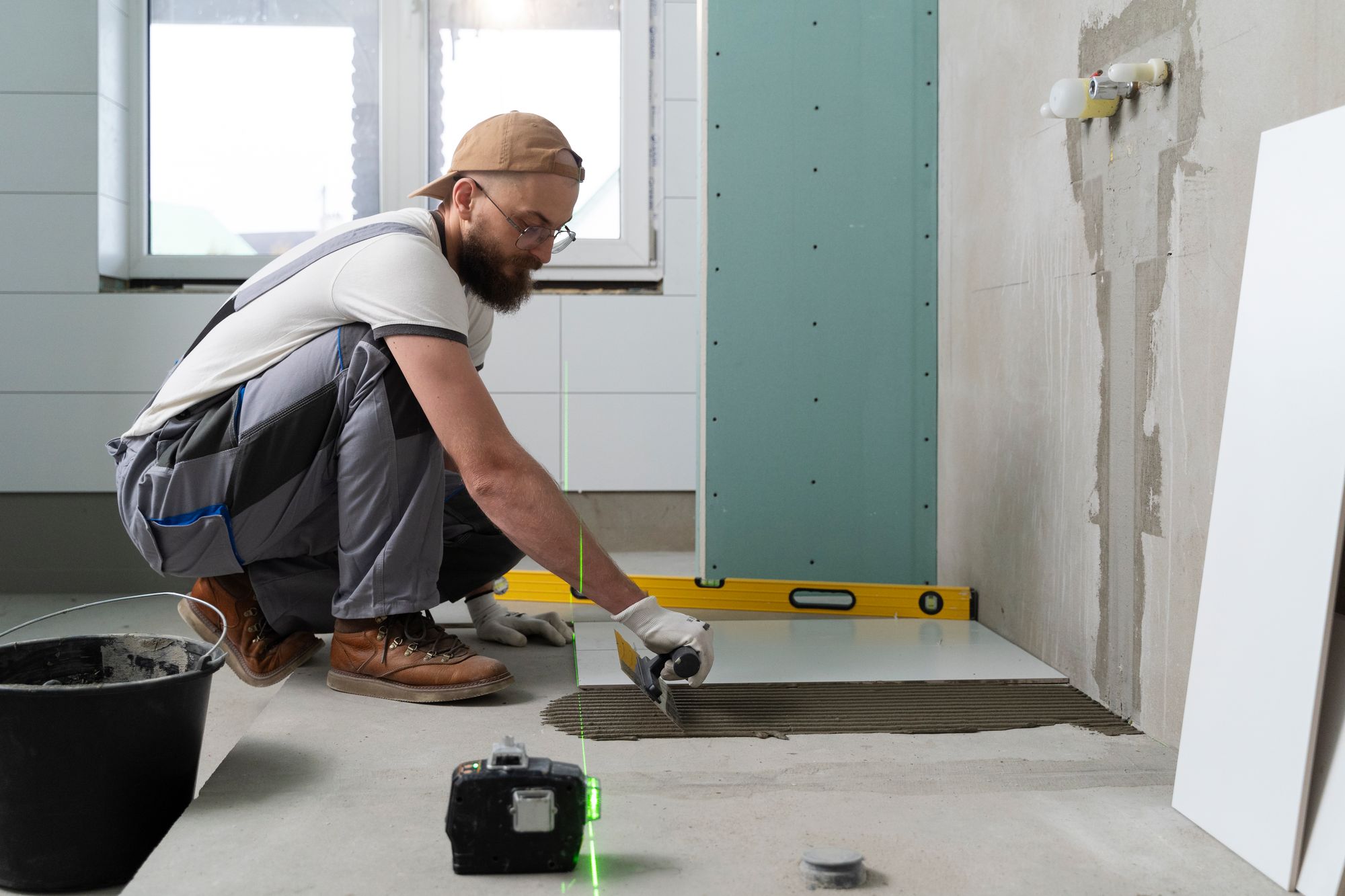
8. Natural Stone Tiles
Stone flooring, like slate, is durable and timeless. It is sourced directly from the earth, reducing the need for synthetic materials.
Price Estimate: $10-$30 per square foot (uninstalled)
Potential Savings: Stone's longevity and timeless appeal can add to the resale value of your home.
9. Recycled Glass Tiles
Glass tiles are made from recycled glass, reducing landfill waste. They are non-absorptive and resistant to mold and mildew.
Price Estimate: $4-$30 per square foot (uninstalled)
Potential Savings: Recycled glass tiles require minimal maintenance and are highly durable, saving costs in the long run.
10. Marmoleum
Marmoleum is a type of linoleum made from natural materials like linseed oil, rosin, and limestone. It's biodegradable, durable, and comes in a variety of colors.
Price Estimate: $3-$7 per square foot (uninstalled)
Potential Savings: Marmoleum's durability and low maintenance needs reduce long-term costs.
Eco-friendly and sustainable flooring options might have a higher upfront cost, but they often lead to potential savings in the long run. They require less maintenance, have longer lifespans, and can even increase the resale value of your home. Most importantly, they help in preserving the environment by reducing waste and making use of renewable resources.
Conclusion
In the quest for a more sustainable future, every choice we make counts, and that includes our flooring options. As we have seen, there are numerous eco-friendly and sustainable alternatives available, each with its unique attributes and benefits. Materials such as cork, bamboo, reclaimed wood, linoleum, recycled rubber, wool, concrete, natural stone, recycled glass, and marmoleum are not only environmentally friendly, but they also offer impressive durability, aesthetic appeal, and potential savings in the long run.
Making the switch to sustainable flooring is a significant way to reduce our carbon footprint and contribute to a healthier living environment. These options use renewable resources, have low energy consumption during production, and often have lower levels of harmful chemicals, leading to improved indoor air quality. Moreover, they are durable and require less frequent replacement, reducing waste and offering long-term cost savings.
When it comes to financing your eco-friendly home renovation, SimpleDirect stands as the best financial option. SimpleDirect offers competitive rates and terms that can help make your sustainable flooring project more affordable. Their transparent and straightforward process ensures you have all the information necessary to make an informed decision.
A sustainable future starts with informed choices. Your flooring choice is more than just a home improvement decision; it's an investment in our planet's health. So, when planning your next home renovation, consider the eco-friendly and sustainable flooring options. Not only will you create a beautiful and healthy living space, but you'll also contribute to a more sustainable and eco-friendly world.

